-
Thursday, 18 November 2021 Edificio Sabatini, Escaleras de Sala de Bóvedas
Ará. Oracione to Open. Ángela Segovia
TicketsArá. Oracione to Open is a theatre piece conceived to be heard in darkness. It stems from a writing process which was initially tied to a physical action: the construction of a cabin in the forest of Las Navas del Marqués, in Ávila. The location of the cabin had to be the same as a past cabin, one which, as a young girl, Ángela Segovia had made with her grandfather. She wanted to work in a rural environment through an idea of repetition (going to the same place every day and discovering it) to purge writing from clichés and nostalgia. Yet, in her first visit to the place, she found that the space had become a cemetery of rock roses; she describes it as “that point at which for me a meditation began on death and a spiritual work that would lead down a path I call la Bella Morte”.
Over the course of a year, the poet developed the interweaving described between the manual construction of the cabin — using nearby sticks, dry branches, grasses, pigments and rocks — and the trial of a language that enables that place to be written.
Ará. Oracione to Open can be understood as an access route to the work the poet has developed since 2019 under the common title of la Bella Morte, accompanied and published in different stages by the publishing house La uña rota, Madrid.
Sound: Julián Segovia Soriano
-
Thursday, 18 November 2021
Sabatini Building, Garden
Bird Call in the Garden. María Jerez and Élan d’Orphium
TicketsStarting from the fact that no presence is neutral and understanding that birds are also our contemporaries — beings with whom we share territories, events and history — María Jerez is interested in developing a relationship between her artistic practice and the said contemporaries, whose song, flight, choreography, nests and installations can interfere in her work, and vice versa.
In this instance, Jerez is joined in a collaboration with Élan d’Orphium, and together they occupy the Museo Garden at dusk to unfurl a shared situation of opening and attentive listening, a kind of invocation in the form of an experimental concert through bird call. A bird call is the sound birds use to call another from their species, or an imitation of this sound by a device, be it air instruments or horns.
-
Thursday, 18 November 2021
Sabatini Building, Room 102
Andromeda Tunnel. Elena Aitzkoa
TicketsVoice as a light guide, resonating in matter. Song as a place of recognition and transformation. Dance as a gauge of air density. Lightness as a possible shortcut. Body to body in sculpture. All of us in movement. Nothing behind the ear. Head torch traversing Lendia Tunnel. A galaxy comes. New lichen nests on the rocks of the lake while dreaming. Once more, a new day awakens.
Elena Aitzkoa
Close to Apodaka, in the area of Álava, there is a pool of frozen water. Every year, at the end of August, the water level drops, making way for a cave at the end of the pool. The entrance is a narrow horizontal gap which grants access to a larger, darker hollow space. In August 2019, Elena Aitzkoa, with two friends, entered the cave people call Lendia. Inside, it changes from pool to lake. The sounds of the voice are different there, perhaps due to the resonance of the subterranean lake, the black-water ground. The intimate exploration of this underground place feeds into a reiterated encounter which seeks to reveal her journey.
-
Friday, 19 November 2021
Sabatini Building, Auditorium
ESTUDIO III in Conversation
TicketsThis activity sets out to bring the public closer to different performance proposals by an approach to fields of research which explore different projects. Consequently, it puts forward a common learning space in the form of a talk with speakers associated with the artists participating in this third edition. Set up around three conversations, the encounter prompts reflection, the formulation of questions and a sharing of references or detecting and divulging common interests, connections and potential.
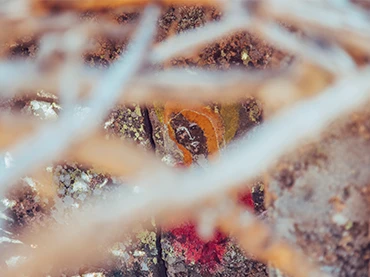
Held on 18 nov 2021
The Museo Reina Sofía presents the third edition of ESTUDIO, an annual programme which brings together work in a range of formats and is the outcome of research conducted by a series of artists and researchers whose practices are tied, either directly or dialogically, to the sphere of choreography and performance.
Under the title Go Out to Encounter. Speak to Place this edition rests its gaze on the forms of situated ecology present in artistic processes, those which open up unforeseen possibilities of relations with the environment in closest proximity. Stemming from the exercise of poetry, writing, sculpture and performances, the different experimentations that materialise in this edition come together in a concern with decentring human beings and enquiring about other ways of being in — and communicating with — places, things, animals and phenomena.
Speak to Place, or rather speak with place, requires a will for displacement. It entails taking on that which is unknown in a certain language, a certain tongue. Letting the grasped and apprehended language brush against other languages, figuratively, literally, carnally. It means settling into a vicarious rhythm to seek common breathing. More than saying something, it means to go out in search of a connection, to open sensorial and perceptive channels that work as connective fabrics. Readying for the encounter of “oddkin” — to use Donna Haraway’s term — and considering the kinship of human beings with other not necessarily human species which inhabit the planet to, henceforth, “imagine other possibilities of living-with or dying-with in a world that is wounded but not finished”.
Go Out to Encounter is also to put the body and posture, the ways of being and doing, with others, whether it be things, plants, animals, rocks or rivers. In short, Go Out to Encounter is to acknowledge an enigma; it is in that place of possibility where this activity is situated, gathering the research of four guest artists who, through their art-making, explore modes of untested co-presence. From poetry, choreography and sculpture they lay out an encounter, go out to acknowledge a strange relationship which does not respond to a route made, but rather glimpses a sensitive rearrangement of landscape.
Following the dynamic of previous editions, ESTUDIO III puts forward a journey over the course of an afternoon and is articulated in three performances which take place in three spaces inside the historical Sabatini Building, the former site of the San Carlos Hospital founded in the 18th century: the access stairs to the underground Vaults Room, the Garden, and one of the rooms of the Collection. The programme is completed with Estudio III in Conversation, an encounter with the participating artists.
[dropdown]
Elena Aitzkoa is an artist whose practice encompasses sculpture, drawing, poetry, performance and film. Her creations are a heterogenous ecosystem which draws from physical and emotional elements of the environment and life experience. She also shines a light on and puts creative energy into the poetic configuration of matter and beauty as a link between beings. Her most recent projects most notably include the performance series Headscarfs Close to the Ground, inside the framework of OSLO PILOT (2016); the film Nuestro amor nació en la Edad Media (2018); the vinyl record of poems and whistles Paraíso terrenal (2019); and the exhibitions Zarza Corazón en el Museo Patio Herreriano de Valladolid (2019), Terraplén, in the Rosa Santos gallery in Madrid (2021), and Lendia Song in Azkuna Zentroa in Bilbao (2021).
Élan d'Orphium (a.k.a. Pablo García Martínez). His work puts forward re-readings of gender, human beings and human gender via a collisional interpretation of listening, gestures and observations with species from other kingdoms. Élan d’Orphium’s work encompasses drawing, performance, action and the consequence of an act of being, sometimes hyperbolic, in which the image breaks from the structure and raises a territory of suspicion, non-narration and estrangement. He looks to dilute or integrate performance into the social and the social into performance in an exercise in relation to the symbolic potential of art.
Erea Fernández (Lugo, 1985) is a researcher of contemporary poetics, and a writer and teacher. She holds a PhD in Literary Studies from the Complutense University of Madrid, combining her work in the cultural sphere with teaching in secondary schools. Her concerns revolve around cultural objects aligned towards the materiality of language and how they problematise the logic of representation. She is the author of the book Poética del fragmento. Aproximación a la experiencia del sentido en in La Vie mode d’emploi by Georges Perec (Ediciones Complutense, 2012), and has published texts in academic, cultural and literary journals, collective books and art catalogues. Furthermore, since 2012 she has been a member of the seminar Euraca, a research project on present-day tongues and languages in the city of Madrid, and is also part of Boya, a collective of artistic and theoretical research active since 2021.
Soledad Gutiérrez Rodríguez (Torrelavega, 1976) is head curator of Thyssen-Bornemisza Art Contemporary (TBA21) and in charge of content for the platform st_age, linked to the same institution. She has spent the past twenty years working in the culture sector in different institutions in Spain and internationally, for instance Museo Guggenheim, in Bilbao, the Museu d’Art Contemporani de Barcelona (MACBA), and the Whitechapel Gallery in London. More recently, she has been director of CentroCentro in Madrid, where she worked on a programme based on contemporary artistic practice and collective learning. Her research pivots around the immaterial and transformative potential of art through performance and collective processes.
María Jerez is an artist whose work is situated between choreography, film and the visual arts. Her recent works question theatre and film conventions and the spectator’s implicit understanding of them, opening potential spaces through encounters with that which the spectator finds strange and alien and establishing blurred edges between that which is known and unknown, between object and subject, the animate and the inanimate. Her work seeks to escape logocentric and anthropocentric logics, where human knowledge becomes something vulnerable before other enigmatic and complex ecosystems.
Paula Pérez-Rodríguez (Madrid, 1989) is a cultural critic, researcher, editor and verbal artist. A companion of art-making in tacoderaya, a companion of thought in the seminar Euraca, and a companion of thought-art-making in the Boya collective, her research work combines approaches to cultural studies, performance and sound with focal points taken from literary theory, sociolinguistics and glotopolitics. She has written essays and articles in specialist publications, for instance 1616: Anuario de Literatura Comparada, from the University of Salamanca, the magazines Concreta and Kamchatka,and on digital platforms such as BeatBurguer, as well as collective works and art catalogues. With tacoderaya, a collective of a selection of voices and sounds formed alongside Jonás de Murias, she has carried out performances and played sets in institutions like Centro de Arte Dos de Mayo (CA2M), the Centro de Cultura Contemporánea Condeduque, Matadero Madrid and L’Internationale Online.
Alejandra Pombo Suárez (Santiago de Compostela, 1979) holds a degree in Visual Arts from the Complutense University of Madrid, broadening her studies with the MA in Digital Arts from Pompeu Fabra University and the Independent Studies Programme (PEI) from Museu d’Art Contemporani de Barcelona (MACBA). Moreover, she holds a PhD in Fine Arts with her thesis on the paradoxes and effects of introducing the notion of performance in art, her art work moving through different mediums and characterised by the search for a new emotional narrative tied to what she calls “perencounter”, which focuses on relations and complexities. She has also participated in projects such as What is Third, in the Casa Encendida (2015) and Mugatxoanin LABoral, Fundação de Serralves and Arteleku (2004–2009), and has undertaken residencies in Spanish and international institutions like the Atlantic Center for the Arts (Florida, USA) and PACT Zollverein (Essen, Germany), among others.
Ángela Segovia is a poet and researcher. Between 2014 and 2016, she was a creative intern at Madrid’s City Council in the Student Residency. In 2019, she was awarded a grant from the Villalar Foundation with the project Apariciones de una cabaña en el bosque. She has also published the books ¿Te duele? (V Félix Grande Youth Poetry Award, 2009); de paso a la ya tan (Ártese quien pueda, 2013); La curva se volvió barricada (La uña rota, 2016), which won the National Literature Award, in the Miguel Hernández Youth Poetry category in 2017; Amor divino (La uña rota, 2018); Pusieron debajo de mi mare un magüey (La uña rota, 2020) and Mi paese salvaje (La uña rota, 2021). Furthermore, she has translated the book CO CO CO U, by Luz Pichel (La uña rota, 2017).
[/dropdown]
Curator
Isabel de Naverán (ARTEA)
Participants
Participants

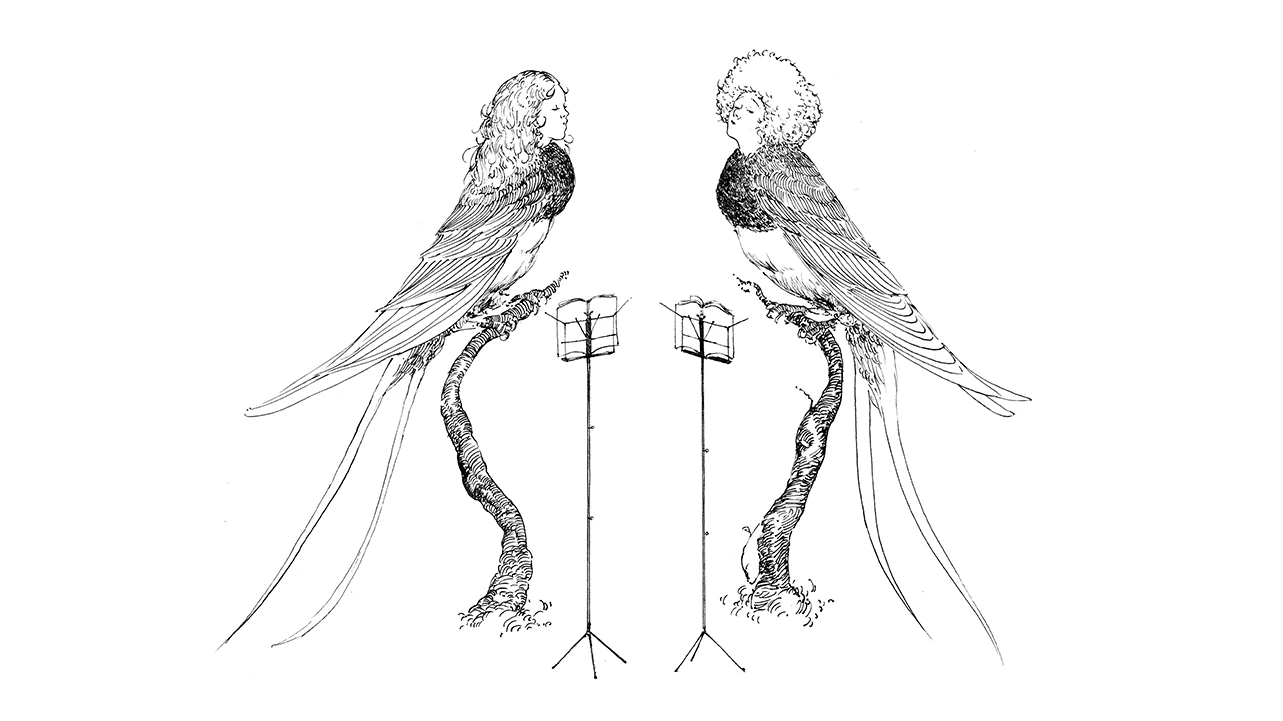
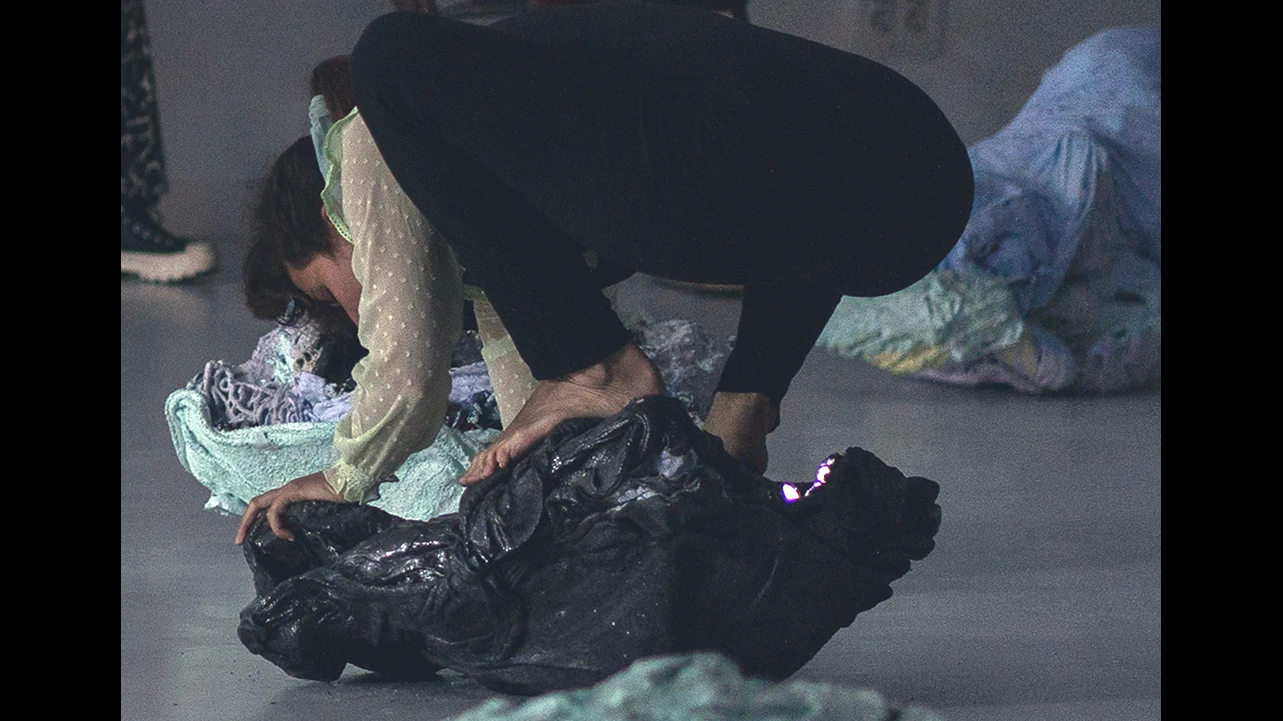
Más actividades

CLINIC 2628. A Community of Writing and Research in the Arts
February – October 2026
Clinic 2628 is a project which supports and brings together writings which stem from the intention to offer a space and sustainable time for research work in art and culture. Framed within an academic context which is increasingly less receptive to the forms in which thinking happens and is expressed, the aim is to rescue the academic from its neoliberal trappings and thus recover the alliance between precision and intuition, work and desire. A further goal is to return writing to a commons which makes this possible through the monitoring of processes and the collectivisation of ideas, stances, references and strategies.
The endeavour, rooted in a collaboration between the Museo Reina Sofía’s Studies Directorship and the Artea research group, via the i+D Experimenta project, is shaped by three annual editions conceived as spaces of experimentation, discussion and a demonstration of writings critical of what is put forward by today’s academia.
What forces, forms and processes are at play when writing about art and aesthetics? In academia, in museums and in other cultural institutions, the practice of writing is traversed by productivist logics which jeopardise rhythms of research and experimentation. The imposition of both scientism inherent in the structure of “the paper” and the quantifying of results which demand a criterion of quality and visibility sterilise and smoothen, from the outset, the coarseness that is particular to writing understood from the concrete part of language: phonic, graphic, syntactic and grammatical resistance connecting the language user to the community the language unites and activates. They also sterilise the roughness enmeshed in the same desire to write, the intuitive, clear and confusing pathways that once again connect the writer to those reading and writing, participating in a common good that is at once discovered and produced.
The progressive commercialisation of knowledge propelled by cognitive capitalism moves further away from the research and production of knowledge in artworks and artistic languages and practices. The work of curators and archive, criticism, performances and essays formerly saw a horizon of formal and emotional possibilities, of imagination that was much broader when not developed in circumstances of competition, indexing and impact. Today, would it be possible to regain, critically not nostalgically, these ways; namely, recovering by forms, and by written forms, the proximity between art thinking and its objects? How to write in another way, to another rhythm, with no more demands than those with which an artwork moves towards different ways of seeing, reading and being in the world?

The (legal) person and the legal form. Chapter II
8, 12, 15 January, 2026 – 16:00 to 19:00
As part of the Studies Constellation, the Study Directoship’s annual fellowship, art historian and theorist Sven Lütticken leads the seminar The (Legal) Person and the Legal Form: Theoretical, Artistic, and Activist Commitments to foster dialogue and deepen the hypotheses and questions driving his research project.
This project, titled Unacting Personhood, Deforming Legal Abstraction, explores the dominance of real abstractions—such as exchange value and legal form—over our processes of subjectivation, and asks how artistic practices can open up alternative ways of representing or performing the subject and their legal condition in the contemporary world.
The seminar consists of eight sessions, divided into three chapters throughout the academic year. While conceived as non-public spaces for discussion and collective work, these sessions complement, nourish, and amplify the public program of the Studies Constellation.
In this second chapter of the seminar, the inquiry into the aesthetics and politics of legal form continues with three sessions that pick up the discussions held in Chapter I but propose new lines of flight. The first session focuses on international law via the writings of the British author China Miéville, which allows us to reconsider the notion of the legal form –following Evgeny Pashukanis— and, through it, a variety of (people’s) tribunals. While the crucial concept of the legal person –as the right-holder central to the form of law— was debated in Chapter I, the second session focuses on attempts to extend personhood not (just) to corporations, but rather to nonhuman animals or ecosystems. Finally, the third session poses the question: how can groups and networks use officially recognized organizational forms (such as the foundation or the cooperative) and/or use a collective persona (without necessarily a legal “infrastructure” to match) to act and represent themselves?

Oliver Laxe. HU/هُوَ. Dance as if no one were watching you
Tuesday, 16 December 2025 – 7pm
As a preamble to the opening of the exhibition HU/هُوَ. Dance as if no one were watching you, film-maker Oliver Laxe (Paris, 1982) engages in conversation with the show’s curators, Julia Morandeira and Chema González, touching on the working processes and visual references that articulate this site-specific project for the Museo Reina Sofía. The installation unveils a new programme in Space 1, devoted from this point on to projects by artists and film-makers who conduct investigations into the moving image, sound and other mediums in their exhibition forms.
Oliver Laxe’s film-making is situated in a resilient, cross-border territory, where the material and the political live side by side. In HU/هُوَ. Dance as if no one were watching you, this drift is sculpted into a search for the transcendency that arises between dancing bodies, sacred architectures and landscapes subjected to elemental and cosmological forces. As a result, this conversation seeks to explore the relationship the piece bears to the imagery of ancient monotheisms, the resonance of Persian Sufi literature and the role of abstraction as a resistance to literal meaning, as well as looking to analyse the possibilities of the image and the role of music — made here in collaboration with musician David Letellier, who also works under the pseudonym Kangding Ray — in this project.
These inaugural conversations, part of the main working strands of the Museo’s Public Programmes Area, aim to explore in greater depth the exhibition narratives of the shows organised by the Museo from the perspective of artists, curators and specialists.
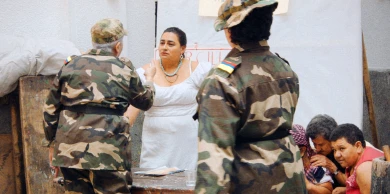
Manuel Correa. The Shape of Now
13 DIC 2025
The Shape of Now is a documentary that explores the challenges and paradoxes of memory, reparation and post-conflict justice, extending a defiant and questioning gaze towards the six-decade armed conflict in which the Colombian State, guerrillas and paramilitary groups clashed to leave millions of victims in the country. The screening is conducted by the Aesthetics of Peace and Desertion Tactics study group and includes a presentation by and discussion with the film’s director, Manuel Correa.
The film surveys the consequences of the peace agreements signed in 2016 between the Colombian State and the FARC guerrilla organisation through the optics of different victims. It was recorded shortly after this signing, a time in which doubts lingered over the country’s future, with many groups speculating in the narration. Correa harnesses the power of images, visual and bodily memory, fiction and re-staging as tools for understanding the conflict, memory and healing, as well as for the achievement of a just peace that acknowledges and remembers all victims.
The activity is framed inside the research propelled by Aesthetics of Peace and Desertion Tactics, a study group developed by the Museo’s Study Directorship and Study Centre. This annual group seeks to rethink, from a theoretical-critical and historical-artistic perspective, the complex framework of concepts and exercises which operate under the notion of pacifism. A term that calls on not only myriad practices ranging from anti-militarism and anti-war movements to activism for non-violence, but also opens topical debates around violence, justice, reparation and desertion.
Framed in this context, the screening seeks to reflect on propositions of transitional and anti-punitive justice, and on an overlapping with artistic and audiovisual practices, particularly in conflicts that have engendered serious human rights violations. In such conflicts, the role played by audiovisual productions encompasses numerous challenges and ethical, aesthetic and political debates, among them those related to the limits of representation, the issue of revictimisation and the risks involved in the artistic commitment to justice. These themes will be addressed in a discussion held after the session.
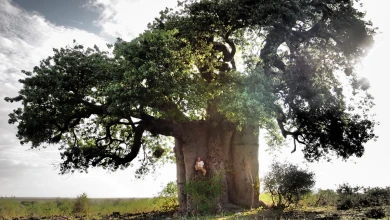
Francisco López and Barbara Ellison
Thursday, 11 December - 8pm
The third session in the series brings together two international reference points in sound art in one evening — two independent performances which converse through their proximity here. Barbara Ellison opens proceedings with a piece centred on the perceptively ambiguous and the ghostly, where voices, sounds and materials become spectral manifestations.
This is followed by Francisco López, an internationally renowned Spanish sound artist, who presents one of his radical immersions in deep listening, with his work an invitation to submerge oneself in sound matter as a transformative experience.
This double session sets forth an encounter between two artists who, from different perspectives, share the same search: to open ears to territories where sound becomes a poetic force and space of resistance.



![Miguel Brieva, ilustración de la novela infantil Manuela y los Cakirukos (Reservoir Books, 2022) [izquierda] y Cibeles no conduzcas, 2023 [derecha]. Cortesía del artista](https://recursos.museoreinasofia.es/styles/small_landscape/public/Actividades/ecologias_del_deseo_utopico.jpg.webp)
![Ángel Alonso, Charbon [Carbón], 1964. Museo Reina Sofía](https://recursos.museoreinasofia.es/styles/small_landscape/public/Actividades/perspectivas_ecoambientales.jpg.webp)